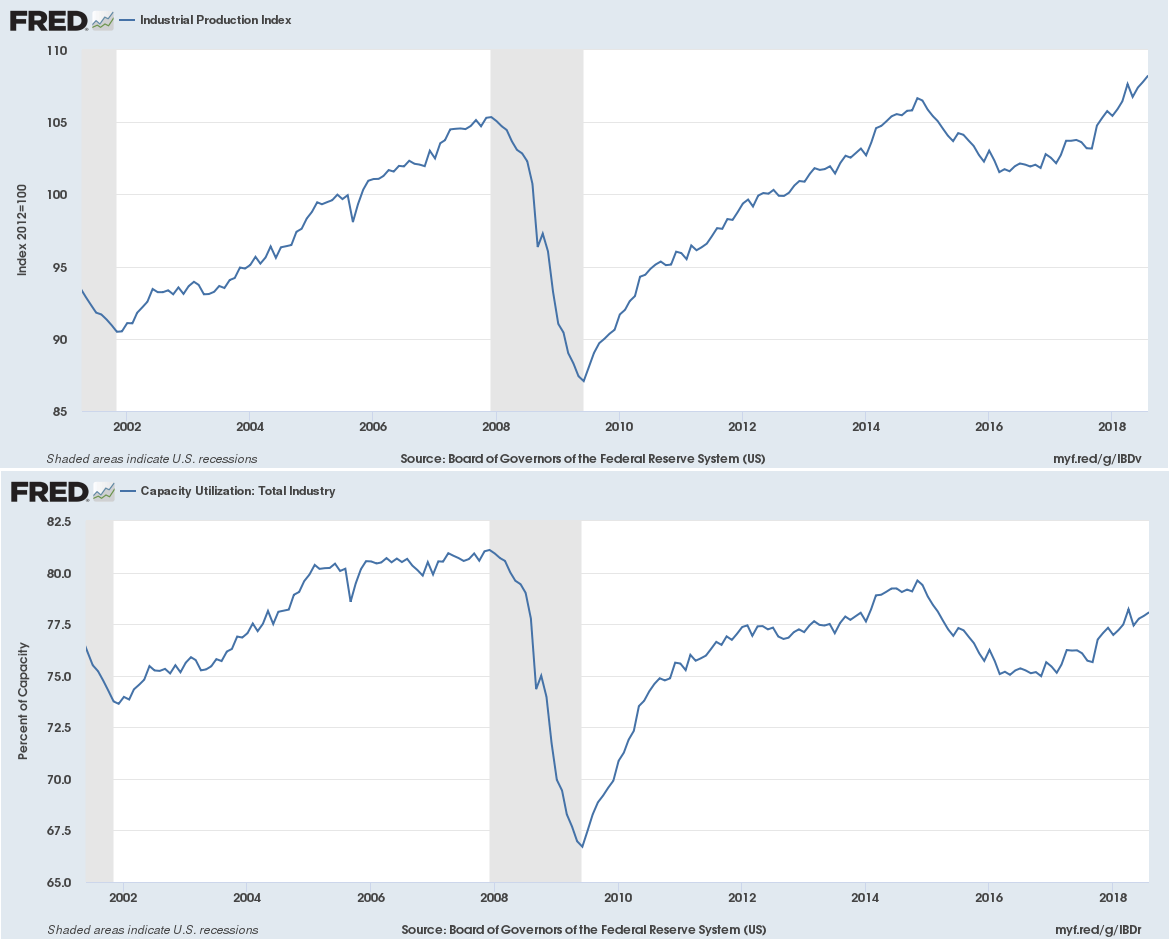Ahead of the data releases today, this post elaborates on why these indicators matter for the economy and what exactly they show.
To begin with, Capacity Utilization refers to how much of available production ability has been used in the past month as a percentage of the total production ability. Naturally, the higher the Capacity Utilization rate used, the better for the economy given that it is reaching better levels of production and is producing more goods. In essence, the closer Capacity Utilization is to 100%, the more the economy is producing and does not leave economic resources sitting idle and hence the higher the inflation rate should be. A simple statistical exercise suggests that Capacity Utilization has a small but positive effect on inflation. Thus, Capacity Utilization also matters for monetary policy, given that if it is low, then inflation is likely to have been subdued and will likely continue to remain at low levels. This, combined with high unemployment levels can signify the rise of deflation risks. In addition, a large excess capacity suggests that no significant investment is needed in order to boost the economy and hence stimulus should suffice. For example, the drop to 66% in 2009 suggested that additional capacity was available and pumping money into the economy via fiscal policy should have worked.
In combination with Capacity Utilization, the Index of Industrial Production measures the volume of goods produced by various industrial firms such as factories, mines, utilities, and publishing. The Index is set to be 100 in 2012 and hence Industrial Production is essentially compared not only to the last period (via the growth rate) but with the 2012 level. The Index assists Central Banks understand how industrial production has fared over the previous period, while it also allows us to observe whether the increase in inflation is also coupled with an increase in industrial production and hence can be attributed to demand or supply sources. If prices are increasing without industrial production moving, then we can expect that price changes are not due to demand factors. On the other hand, if industrial production increases, we can expect that demand-side inflation will also be increased in the future.
Disclaimer: Nothing in this communication contains, or should be considered as containing, an investment advice or an investment recommendation or a solicitation for the purpose of purchase or sale of any financial instrument.
Recommended Content
Editors’ Picks
EUR/USD clings to daily gains above 1.0650

EUR/USD gained traction and turned positive on the day above 1.0650. The improvement seen in risk mood following the earlier flight to safety weighs on the US Dollar ahead of the weekend and helps the pair push higher.
GBP/USD recovers toward 1.2450 after UK Retail Sales data

GBP/USD reversed its direction and advanced to the 1.2450 area after touching a fresh multi-month low below 1.2400 in the Asian session. The positive shift seen in risk mood on easing fears over a deepening Iran-Israel conflict supports the pair.
Gold holds steady at around $2,380 following earlier spike

Gold stabilized near $2,380 after spiking above $2,400 with the immediate reaction to reports of Israel striking Iran. Meanwhile, the pullback seen in the US Treasury bond yields helps XAU/USD hold its ground.
Bitcoin Weekly Forecast: BTC post-halving rally could be partially priced in Premium

Bitcoin price shows no signs of directional bias while it holds above $60,000. The fourth BTC halving is partially priced in, according to Deutsche Bank’s research.
Week ahead – US GDP and BoJ decision on top of next week’s agenda

US GDP, core PCE and PMIs the next tests for the Dollar. Investors await BoJ for guidance about next rate hike. EU and UK PMIs, as well as Australian CPIs also on tap.
